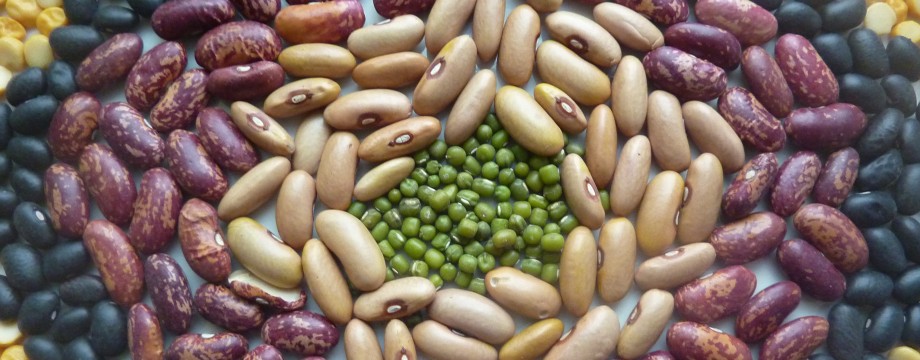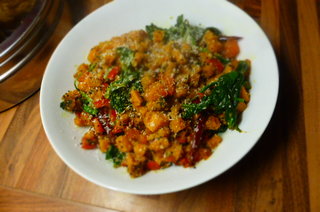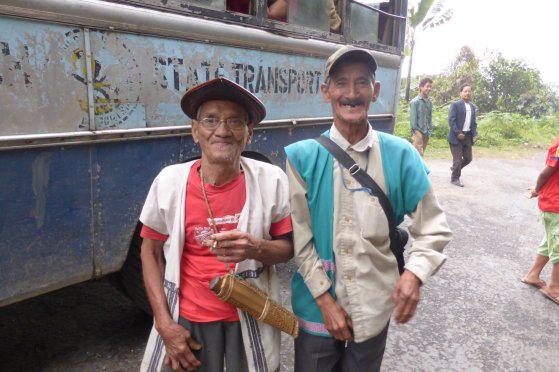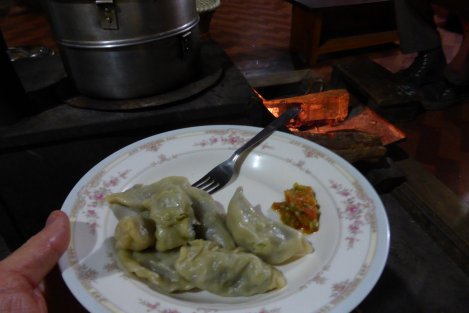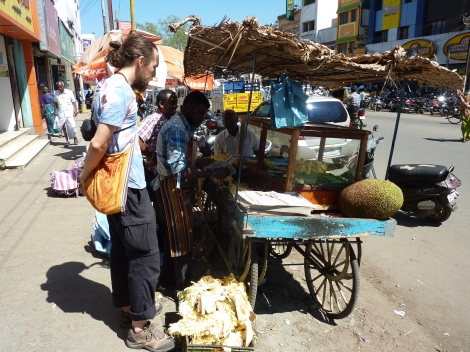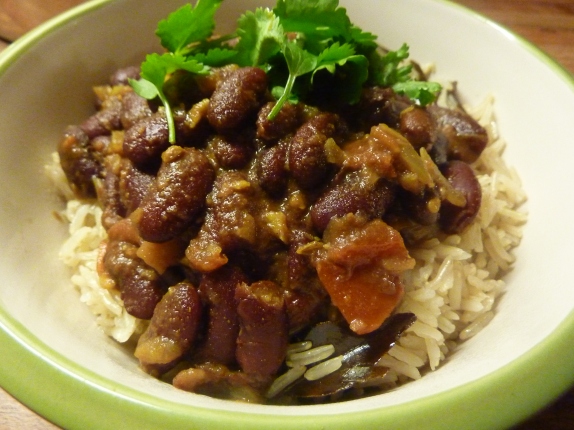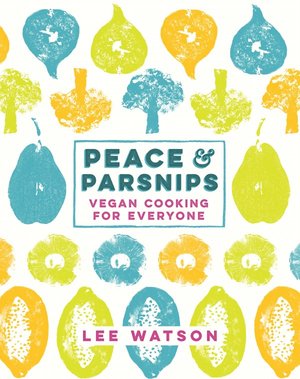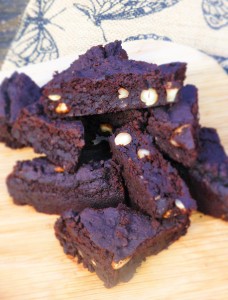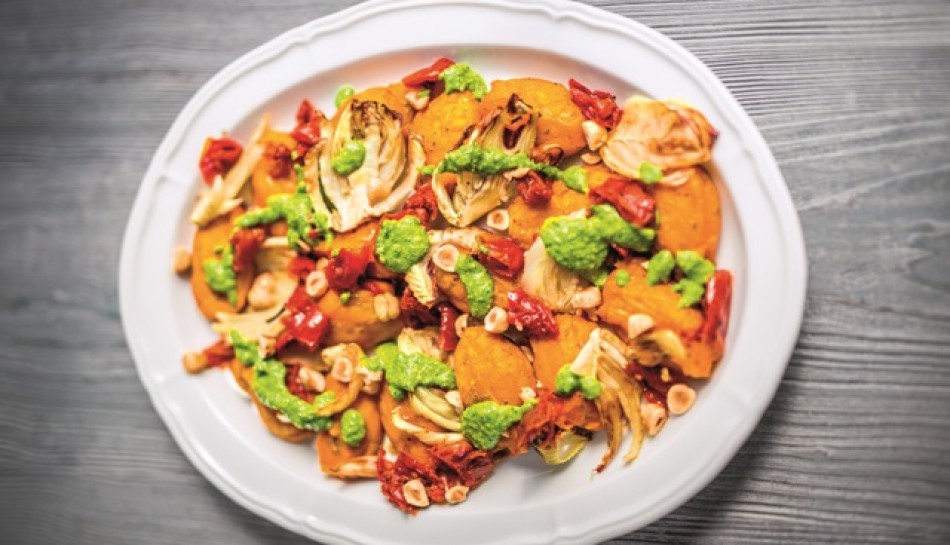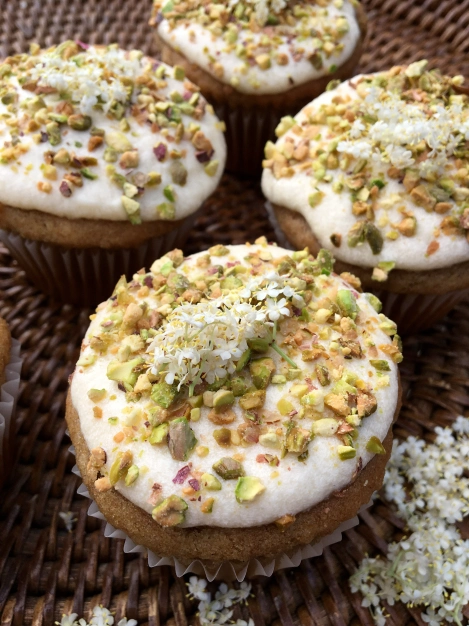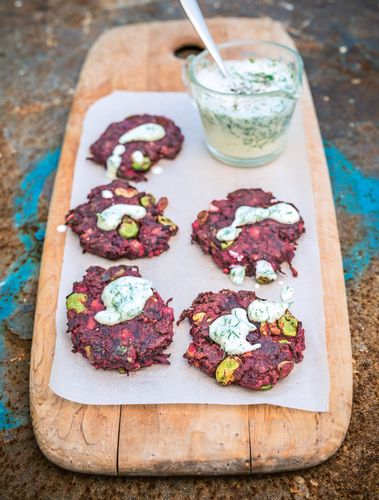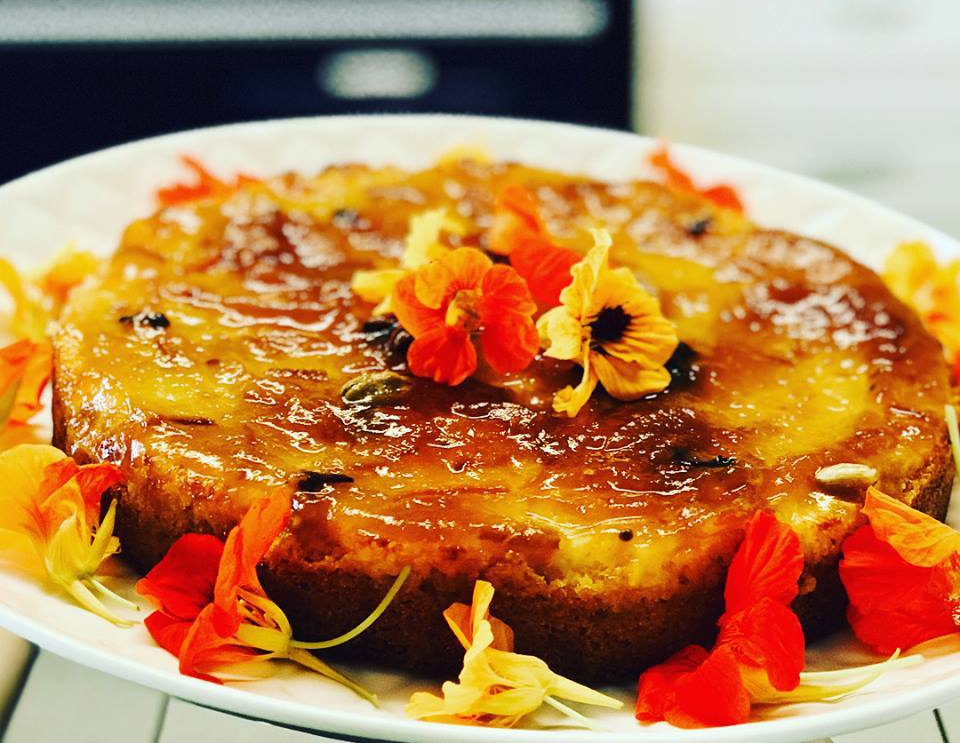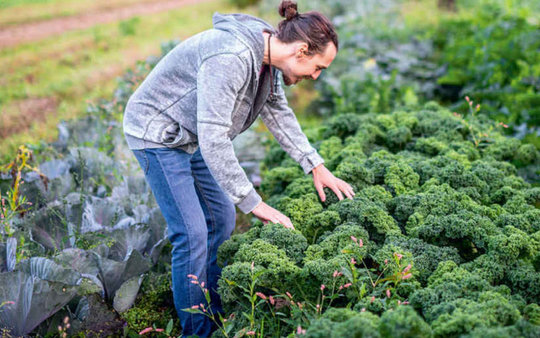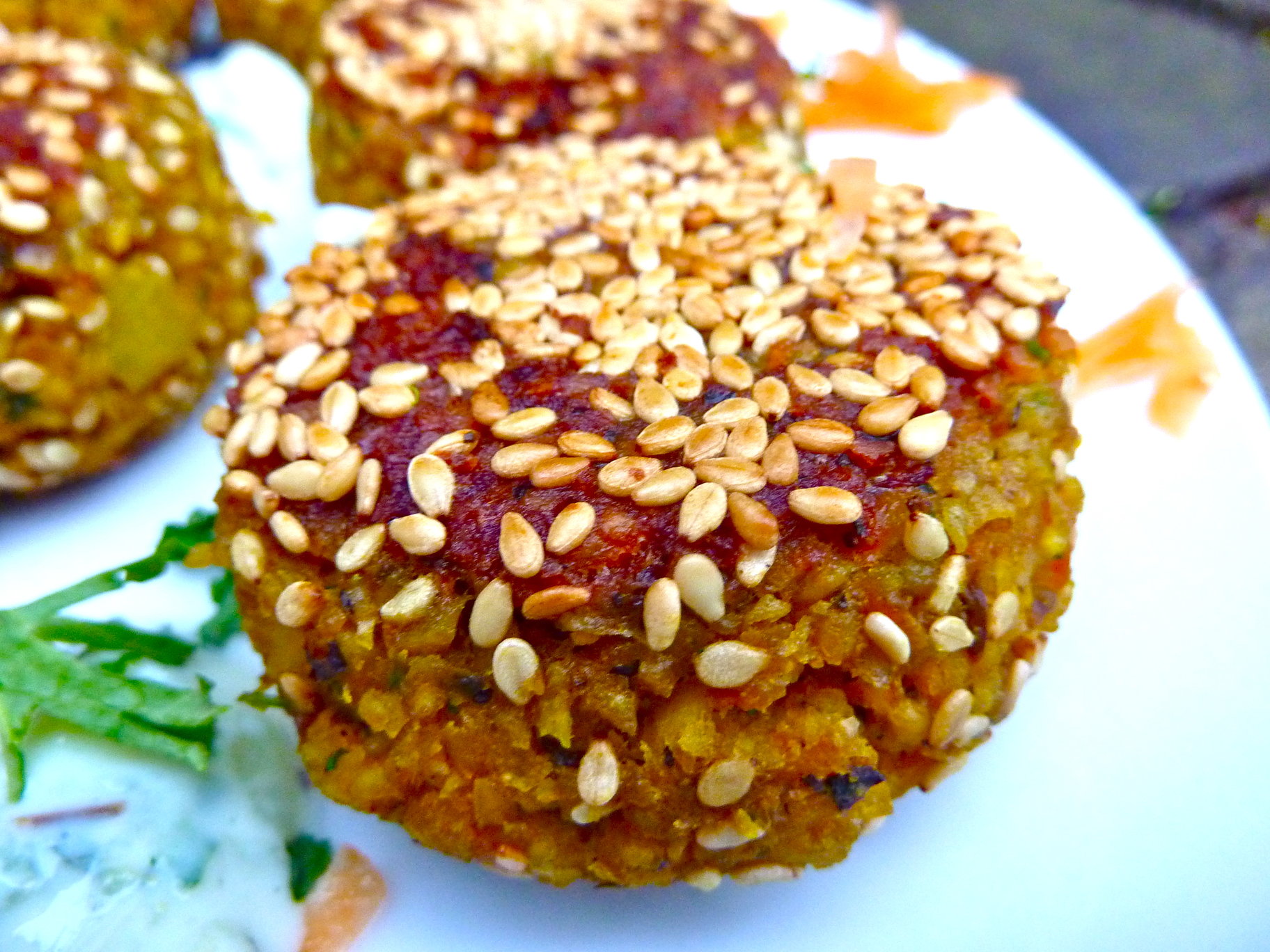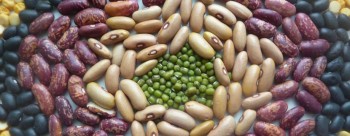
Beach House Kitchen Bowl!
Better than takeaway! Wayyyy better!! Made with only fresh vegetables and spices, this Indian feast is delicious, rich and healthy too. I’ve stripped down the preparation and ingredients, so this need not be a weekend treat. It’s very mid-weekable! Three recipes, served with our favourite condiments and we’re feasting vegan style!
I’m addicted to spice! Can’t live without it for long. When I travel around Italy or France, I’m always packing garam masala. We really fancied a thali today, something colourful, filled with fragrant aromas, dishes to enliven the taste buds. Plus, it’s my day off, what better way to celebrate! We were missing India (see some of our India travels here) and felt like a light and seasonal curry. Lots of it….this is our Beach House Kitchen Thali Bowl!*

Curry in the BHK front garden, where the herb garden has gone a little feral.
It happens at this time of year. The trees are all turning golden and crimson and I begin to ponder dark nights and BIG storms (we live on a mountain side). I love the drama and peace of winter, but I need colours, spice and variety to get me through. I like to get some rainbows cooking in the kitchen when the skies are grey.
We eat curries every week, sometimes even for breakfast (AM curry recipe here). I love giving local, seasonal veggies an Indian twist. I’ve used simple spices and ingredients here, like I said, this is a staple recipe, something I’d like you to find easy to cook. Add and subtract vegetables as you like, whatever is good or in your veg basket/ fridge.
Travelling India, especially in the South, is a moveable vegan’s feast. So many, coconut based options and up North, just ask to hold the ghee and you have a whole host of tantalising options, from street foods to wedding banquets, you’re gonna eat well in India as a plant-based wanderer.

Easy Vegan Curry Feast – 3 quick recipes
The essence of a good curry is fresh spices and a vibrant sauce (or gravy as they sometimes call it in India). Got to be flavourful, it’s the base for soulful and spicy things to happen in your kitchen. You’re creating something very special.
Here we make a simple tomato sauce, that can be used in a whole host of curries. We mix in coconut cream, but it can be served as it is with vegetables. We don’t blend it here, but that will make for a nice smooth sauce.

A portal to Pondicherry…..India we miss you (thanks for the spice!)
This was our lunch, so we ate it out in the garden. I love the autumn up here in Snowdonia, the sunsets are regularly spectacular and there is plenty of sunshine with a nip in the air. Ideal for walking in the mountains and along the beaches. I’ll post some pictures soon.
We’ve been preparing for winter by refining our fermentation skills, Jane is on kombucha, I’m all over sourdough and sauerkraut etc. Packing loads of colours and flavours into big jars and fermenting, it really is magic. You can see some of our Radish Bombs here, with a nice hit of lime and spices. Perfect on most things! We are always inspired by our friend Janice from Nourished by Nature, see Spicy Radish Bomb recipe here. A shining light!
These curry recipes will keep you going this autumn, straight through winter, filled with spicy, rainbow bowls.

Roasted Vegetable and Coconut Curry, all the trimmings…
Recipe Notes
The curry and daal will freeze well. Make double if you fancy, portion it up into seperate containers and you’re well ahead.
The vegetables can be played with here. No squash, carrots or pumpkin is fine. No kale, use savoy cabbage or spinach. No peppers, try courgettes or aubergines. You get the idea! Mix and match. Play. Enjoy!!
I’m not shy with oil here. It adds richness, but using less will not adversely affect these dishes at all. Stirring coconut oil into these dishes at the last minute is a nice way to finish things.
I roast and grind my own spices before cooking, especially the cumin and coriander. You can’t beat the flavour. Here’s a post about roasting and grinding your precious spices.
This is a mild, lightly spiced curry. If you like spices add more! If you like chillies, go crazy!!
Timing is everything right!
Stage one – Start with your rice, then daal, then roast your vegetables and get the sauce cooking.
Stage two – Leave a lid on the rice (keep it warm), finish off the daal with the fried spices and garlic, add your roasted vegetables to your sauce.
There will be a lot going on here, you’ll need four pans and an oven working in harmony, but that’s the buzz and excitement of cooking like this, pots bubbling away, all action. Once you’ve made these recipes a couple of times, you won’t even need the recipes. You’ll be free-styling and expressing yourselves like true curry champions!!
Do let us know if you like this recipe, or even better, if you try it out.
We love to hear from you below in the comments. Say “hello!”
I’ve also just started posting over on Instagram.
 Svaadisht!
Svaadisht!
Easy Vegan Indian Feast – Roasted Vegetable and Coconut Curry, Black Kale Daal and Coconut Rice
The Bits – For 4 big eaters or 6
Coconut Rice
250ml brown basmati rice
500ml vegetable stock
1 1/2 teas cumin seeds
2/3 teas nigella/ kalongi seeds
1/2 teas mustard seeds
1/2 stick cinnamon
5 green cardamom pods (cracked)
4 tbs dessiccated coconut
1 tbs cold pressed oil/ coconut oil
1/2 teas sea salt
Black Kale Daal
250g red lentils
850ml vegetable stock
1/2 teas turmeric
125g black kale/ cavolo nero (finely sliced)
1/2 tbs cold pressed oil/ coconut oil
3 cloves garlic
2 heaped tbs chopped ginger
1 1/2 teas cumin seeds
1 teas mustard seeds
1/2-1 teas sea salt
Roasted Vegetable and Coconut Curry
2 peppers (chopped)
500g/ 1/2 large butternut squash
1 large onion
1/2-1 tbs cold pressed oil/ coconut oil
Sea salt and black pepper
Spicy Tomato Sauce
1 large onion (chopped)
5 tomatoes (chopped)
5 cloves garlic (finely chopped)
2 tbs ginger (finely chopped)
1-2 red chillies (sliced)
150g/ 2 handfuls white cabbage (sliced)
2 teas garam masala
2 teas ground cumin
1 1/2 teas ground turmeric
1 1/2 teas ground coriander
1-2 tbs cold pressed oil/ coconut oil
1 teas sea salt and black pepper

Easy to be vegan!
Do It
Rice
Wash and drain your rice several times. Add the oil to a small saucepan, heat on medium, add the seeds, stir for a 30 seconds, add the coconut, cinnamon and cardamon, stir and cook for a few minutes, until the coconut is golden and fragrant. Add the rice and stock. Stir again and bring to a boil. Lower heat to a slow simmer and pop a lid on. Leave to cook for 25-30 minutes. It will depend on your rice.
Daal
Wash and drain your lentils well. Add them to a medium sauce pan. Cover with the stock, add the turmeric and bring to a boil. Lower the heat to a low simmer, pop a lid on and leave to cook for 25 minutes. Stirring a few times. Once the lentils are cooked, in a small frying pan, add the oil and heat on medium. Fry the seeds, ginger and garlic together until the garlic is golden. Add this mix to the lentils, along with the kale, season with salt and thin out the daal with hot water from a kettle if needed.
Curry
Preheat oven to 200oc. Toss you squash, peppers and onion on a baking tray with oil, salt and pepper. Place in the oven and roast for 30 minutes, turning once. Get some nice colour onto the vegetables, some caramelised edges are very welcome.
While that’s happening, in a large frying pan on high heat, add your oil and cook the onions for 7 minutes, until golden. Add the garlic, chilli, ginger and spices, fry a minute, stirring. Now add the tomatoes and salt. Lower the heat and cover with a lid. Leave to cook for 8 minutes. Take the lid off, add the coconut milk and cabbage, leave to simmer for 10 minutes. Check the seasoning and ensure the cabbage is cooked through.
Your roasted vegetables will now be ready, scrape them gently into the pan and combine well with the sauce.
You’re good to go! On a preferably warm plate/ shallow bowl, add the rice, daal and curry.
Serve topped with sliced chillies, your favourite pickles, crispy onions, radish bombs and we had coconut yoghurt.

Vegan curries all the way! Healthy and delicious, always possible!!
Foodie Fact
Every part of this curry sparkles with nutritional wonders. Because we’re only using fresh vegetables, whole grains and spices, it really is a bowl of healthy happy. Eating a balanced vegan diet, based around fresh fruit and veg is the healthiest way we can fuel ourselves, tasty too! This bowl is filled with a huge range of vitamins, minerals, iron, protein, anti-oxidants, pro-biotic goodness, good energy, good fats, good vibes! This bowl is good for your heart, your mind, your skin, your tastebuds!!
You could even add some steamed broccoli or kale for an ultimate healthy happy bowl.
*PS – A thali is a traditional plate, with loads of compartments for treats. We don’t have one. I’d like one, but I’m trying to minimise my kitchen equipment. It’s amazing what you can do with a few spoons and a pan. No gimmicks. No gadgetry. I’m getting back to the roots of cooking. Except my blender. I draw the old school line there. How do you hand-make a smoothie?
